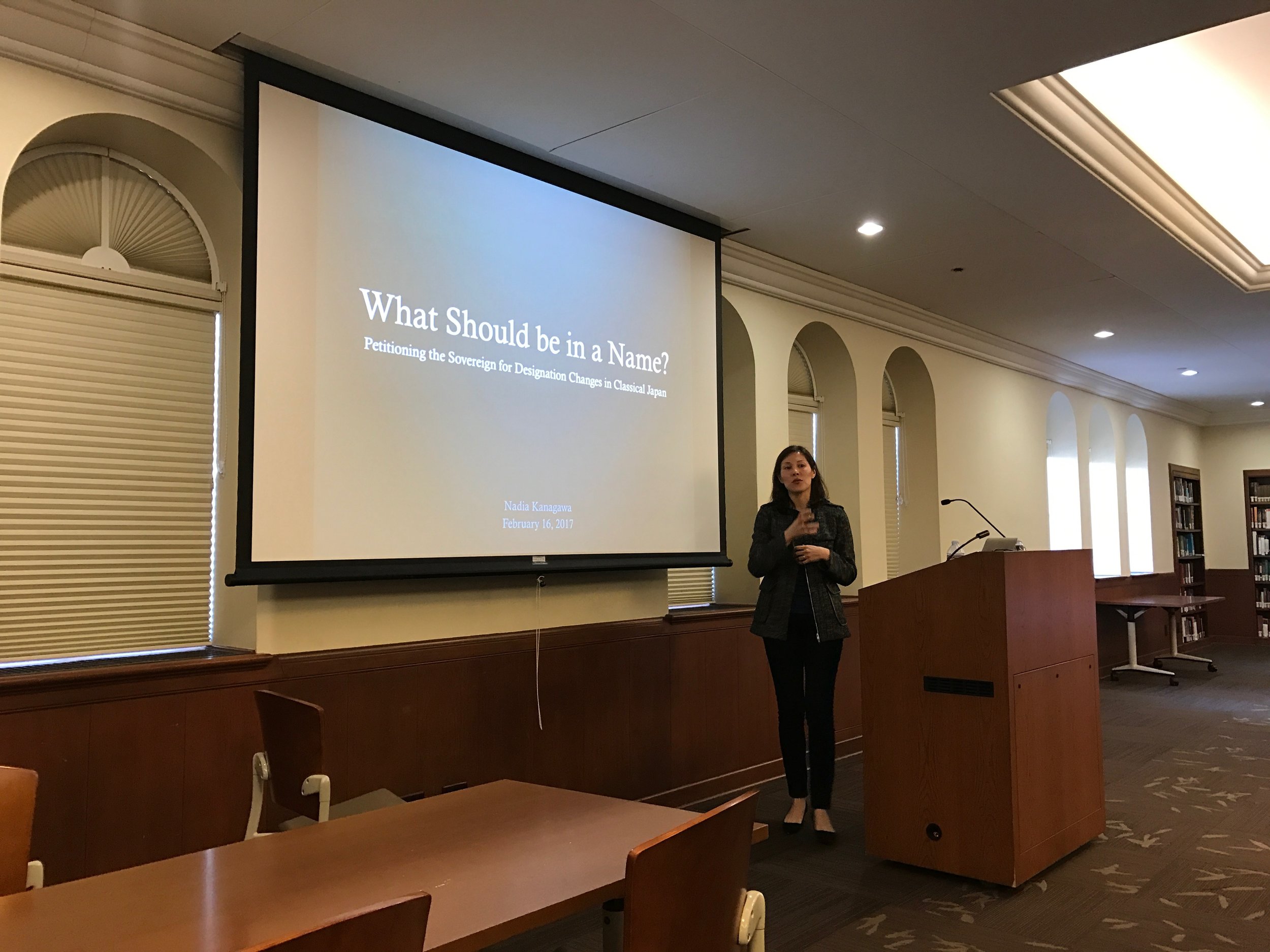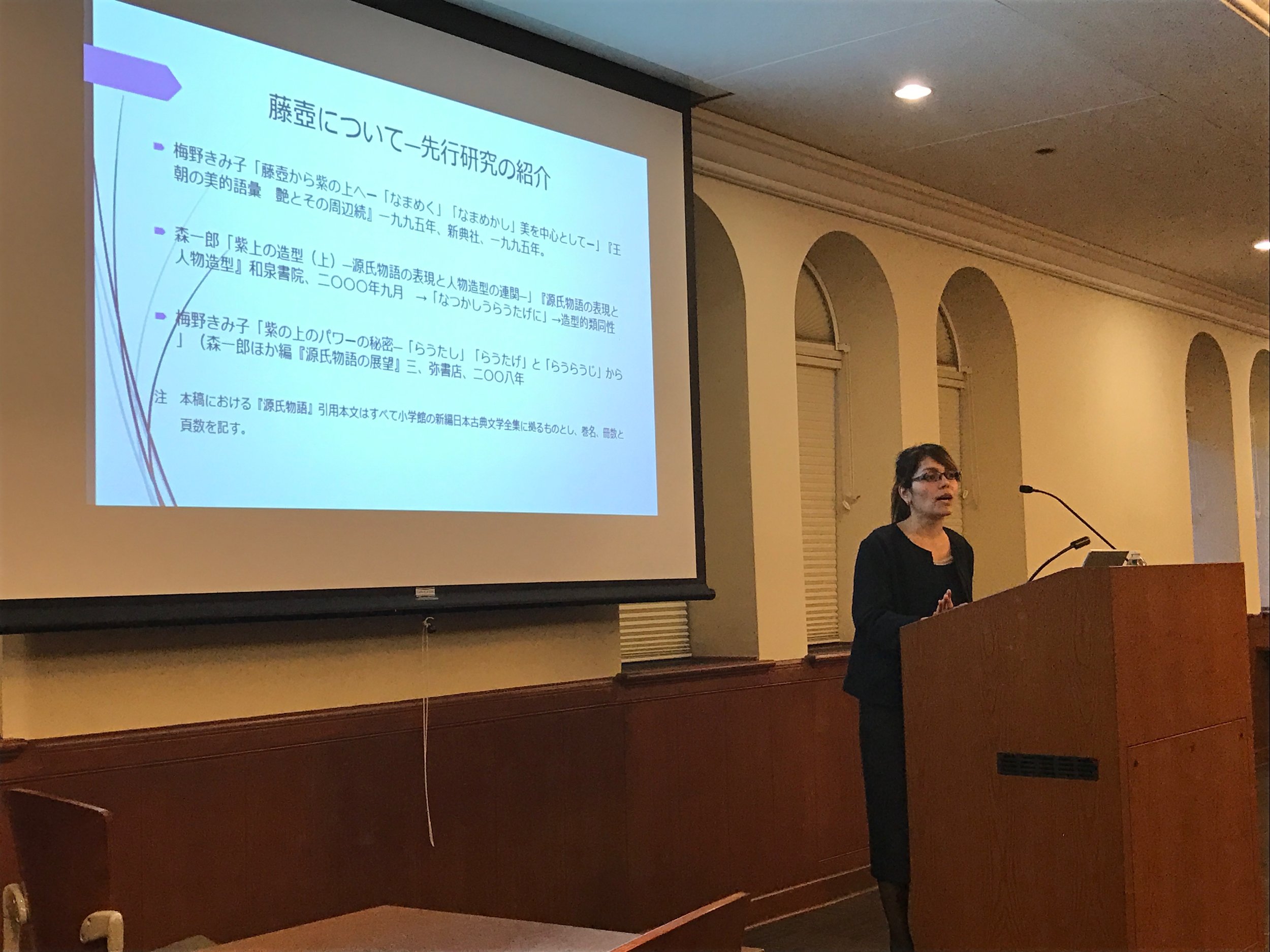Graduate students from Meiji University, Doi Shôhei and Satô Kenri test their mettle, presenting their papers in English.
Sources! Sources! Graduate student Sakurada Marie takes us into written history and the early Japanese state with her analysis of the royal consorts.
Below: What's in a name? Well, quite a bit, actually, says Nadia Kanagawa, in her analysis of the name-granting of Nara immigrants. What's in court ritual? Quite a bit, says Professor Inokuma, in his analysis of the material details of Classical palace rituals. And finally, Gulnoza Kurbonova finished the day with an analysis of Fujitsubô in The Tale of Genji.
Despite brief technical difficulties from the storm raging outside, the conference continued with presentations on the second day. Graduate student Chris Bovberg analyzed changes in 13th century warrior government, followed by Cassie Dierolf, who analyzed changes in female property rights. Nicolette Lee then turned our sights on monastic creation and ownership of art, particularly illustrated scrolls.
Dan Sherer discusses gifts—and bribes—of the Sengoku Period.
One day in prehistory, and the next day, by the afternoon, the conference reaches the modern. In a talk that was part travelogue, part document sleuthing, Professor Nojiri Yasuhiro offered explanations for early modern document forgery. Professor Professor Roberts discussed Edo Period samurai women, followed by Christopher Reichenbacher's analysis of sumo networks. Finally, Professor Oyokawa Minoru brought us into the Meiji Period with his talk on museum collections and international interactions, a fitting final talk for an international conference of premodern specialists.












